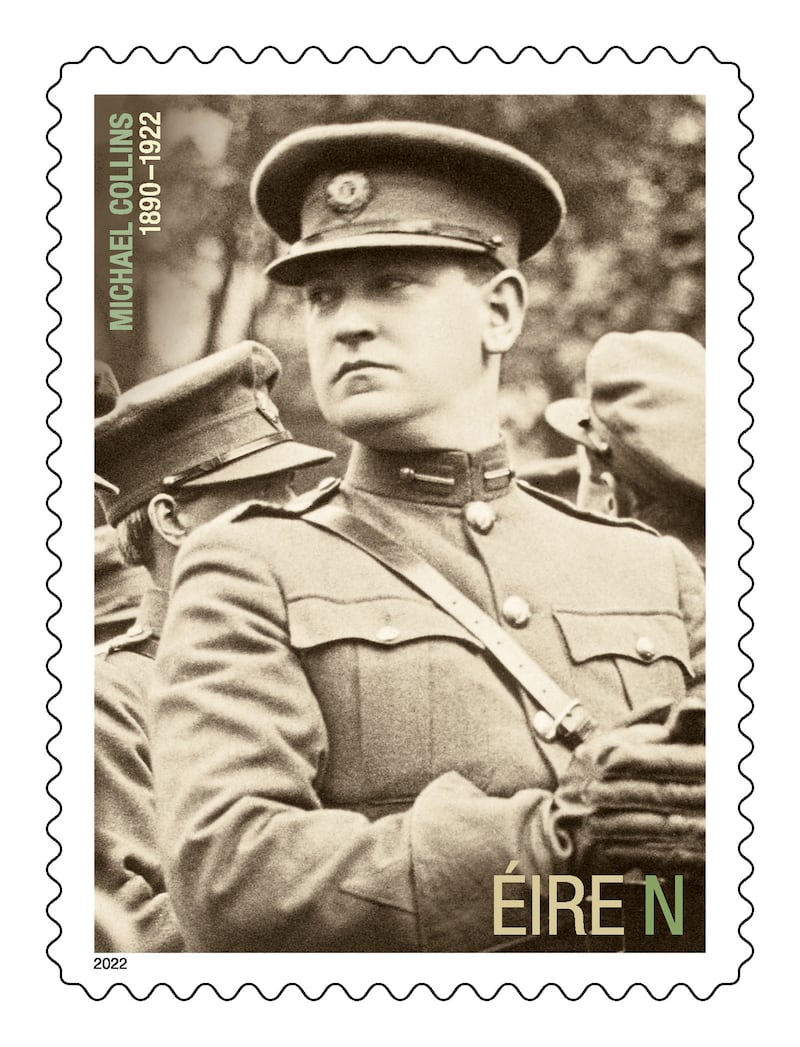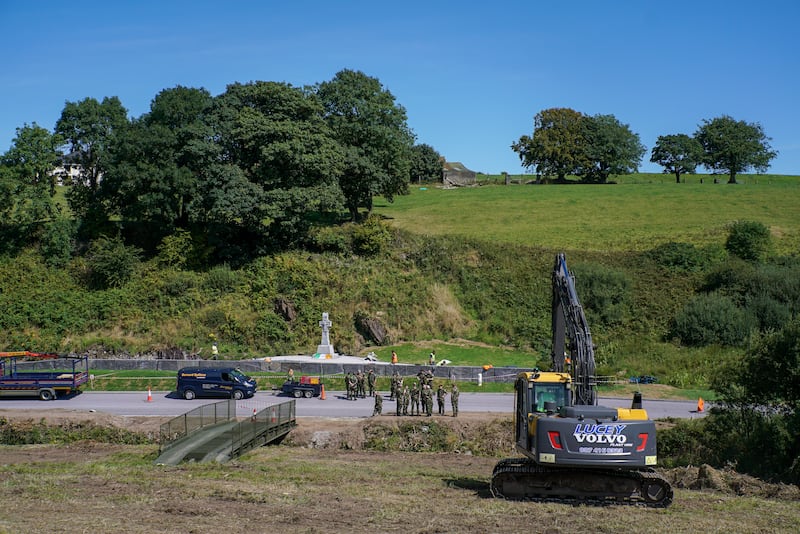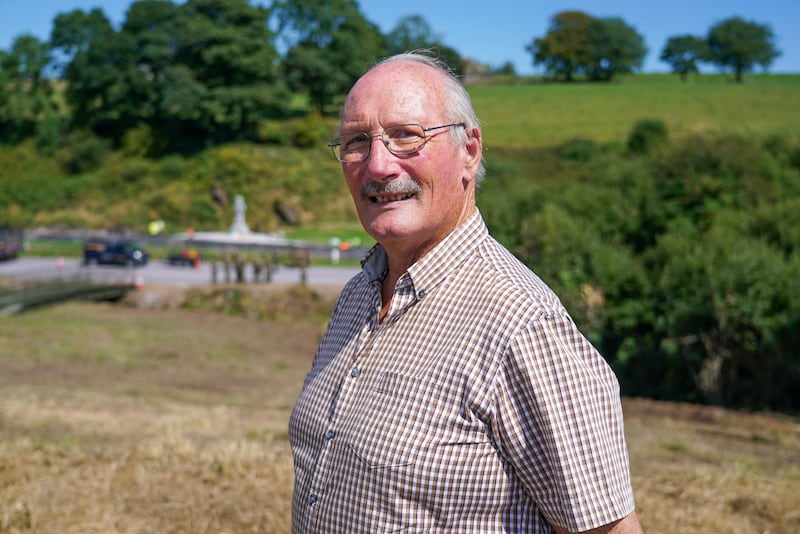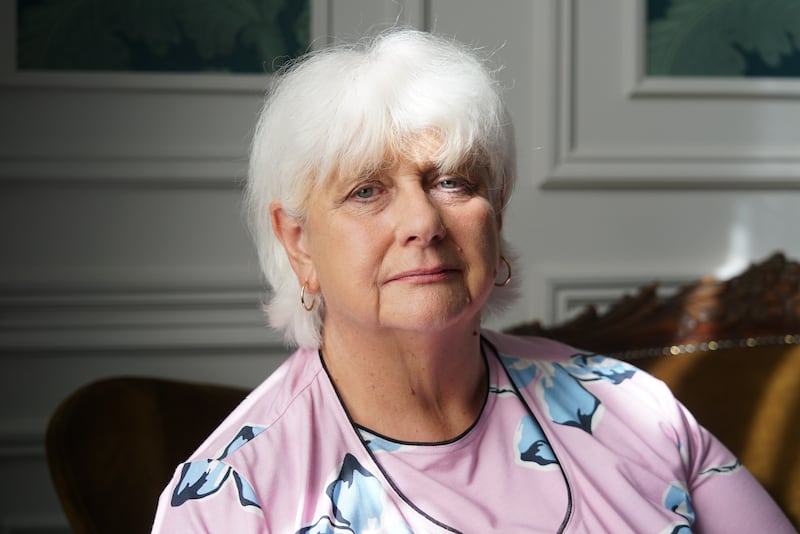Béal na Bláth must have some claim to be the saddest place in Ireland. It wasn’t just Michael Collins who was killed there at twilight on August 22nd, 1922. Hope died too, according to many of his contemporaries, along with the prospect of reconciliation between the pro- and anti-Treaty sides, and an end to partition. Collins’s death unleashed a new and savage phase of the Civil War, with executions and counter-reprisals which poisoned Irish society for generations.
The famous silhouette of Collins striding purposely, taken at Portobello Barracks just a few weeks before he died, is everywhere in this part of west Cork. It’s on the signpost denoting the Michael Collins trail, it’s on T-shirts sold in Clonakilty where there is an ongoing exhibition into his life and death. At Béal na Bláth crossroads there is a gift shop in a Portakabin selling souvenirs. On Sunday in Newcestown there will be a world-record attempt at the largest ever gathering of people who share Michael Collins’s name.

The ambush site is being significantly upgraded in advance of the commemoration. The limestone cross marking the site has been cleaned up and the railings replaced by a granite plinth. On the plinth are the names of the places Collins visited on his last journey, among them Macroom, Bandon, Sam’s Cross, Kilmurry, Clonakility, Rosscarbery, Skibbereen – “beads on a sorrowful decade of the rosary”, as Collins biographer Tim Pat Coogan called them.
Sunday’s Béal na Bláth commemoration, which will be addressed by both the Taoiseach Micheál Martin and Tánaiste Leo Varadkar, is likely to be the biggest to date. A digger was on site during the week readying the grounds for the expected crowds. Organisers are anticipating around 5,000 people.
READ MORE

Most historians agree the actual ambush site where Collins fell is not at the cross, but another 50 metres down the road. The line of sight most likely taken by his killer is now obscured by trees and bushes, but is 75 metres from where Collins was shot.
‘If Mick had ever been in a scrap he would have learned to stay down,’ General Dalton said afterwards. For all Collins’s world renown as a guerrilla fighter, he had done little actual fighting
Béal na Bláth is ideal ambush country. The narrow road cuts through a deep valley with steep slopes on each side. Running parallel to the road on the left, as Collins’s convoy travelled from Bandon to Cork, is Long’s Lane. It completely overlooks the road beneath and provides an ideal means of escape. The terrain favours the ambusher.
No wonder Collins’s travelling companion in the touring car, General Emmet Dalton, told their driver to “drive like hell” – an order Collins countermanded, insisting they engage the enemy. Eyewitnesses state Collins was standing out in the open when he was shot.

“If Mick had ever been in a scrap he would have learned to stay down,” Dalton said afterwards. For all Collins’s world renown as a guerrilla fighter, he had done little actual fighting.
Many aspects of the ambush do not make sense, says local man Noel Howard, involved with the nearby Kilmurry Independence Museum which is hosting a Michael Collins exhibition to coincide with the centenary. Howard is also a former commandant in the local defence force Fórsa Cosanta Áitiúil (FCA).

Why was Collins travelling in an open-top car? Why did the convoy stop for directions at Long’s pub, which is at Béal na Bláth crossroads, thus signalling to a waiting scout he was in the area? Why did they come back the same way they went, and in enemy territory too?
“I have trained military personnel for 41 years. Some things are beyond comprehension. I still meet military colleagues and we go for a drink once a month. We came up here and looked down. It was inexplicable. They could not understand what went on here,” he said while overlooking the ambush site.
Howard believes the same bravura that led Collins to cycle around Dublin during the War of Independence, despite being the most wanted man in Ireland, may have been on display at Béal na Bláth.
The careless way in which the provisional government handled the aftermath of the killing has fuelled a century of speculation and rumour.
[ The Hollywood star who provides a living link to the death of Michael CollinsOpens in new window ]
On the walls of the Kilmurry museum are profiles of two anti-Treaty soldiers, Patrick O’Mahony and William Harrington, killed during the Battle of Limerick in July 1922. These almost forgotten foot-soldiers got inquests but the commander-in-chief of the National Army did not. Dalton, who took over in Cork, specifically banned inquests in the county after Collins was shot.
In The Assassination of Michael Collins: What Happened at Béal na mBláth?, the American author SM Sigerson described the ban on inquests as an “unbelievable travesty” tolerated by the provisional government.
“That Dalton should have been invested with such authority, or allowed to retain such authority, after he himself had been present at the killing of his superior officer, is inconceivable in itself.”
No inquiry was ever carried out or death certificate issued. The autopsy report completed by Dr Oliver St John Gogarty was never made public, and Gogarty was reluctant to speak of it.
So many basic questions about the ambush remain unanswered. What weapon was used to kill Collins? Why was he the only fatality in an ambush that lasted up to an hour? The most pertinent question of all though remains: Who killed Michael Collins?
In the 1990 documentary, The Shadow of Béal na Bláth, Jim Kearney, the last surviving member of the ambush, named – off camera – Denis “Sonny” O’Neill, a veteran of the first World War, as the man who pulled the trigger on Collins.
Yet recent evidence presented by Paddy Cullivan in his roadshow, The Murder of Michael Collins, suggested O’Neill had a 40 per cent disability in his left arm and there was no evidence he was the crack shot his colleagues suggested he was. Moreover, there is some doubt if Kearney was even there on the evening in question.
‘My grandfather made peace with people. If Johnny Collins can make peace with people, that is good enough for me’
Sigerson believes the killing was more likely the work of the British secret service and a cabal within the Irish cabinet alarmed by Collins’s desire to end partition by force if necessary.
Kieran Fitzpatrick, another member of the curating team at Kilmurry, said there was too much “happenstance” at Béal na mBláth to suggest a conspiracy and it was most likely that the ambush party did not set out to assassinate Collins.

Back in the Imperial Hotel in Room 115, where Collins spent his last night on Earth, and which is now fitted out as it might have been in 1922, his great-niece Fidelma Collins believes nothing can be gained by continuing to air the most vexatious question in Irish history. Her grandfather Johnny was Michael Collins’s brother.
“I may sound as if I’m dodging it, but it’s 100 years on. Some things need to be laid to rest. My grandfather made peace with people. If Johnny Collins can make peace with people, that is good enough for me.”





















